12 Bar Blues With Chord Diagrams For Beginner Guitar Players | Part 2
Author: Erik Ringstad
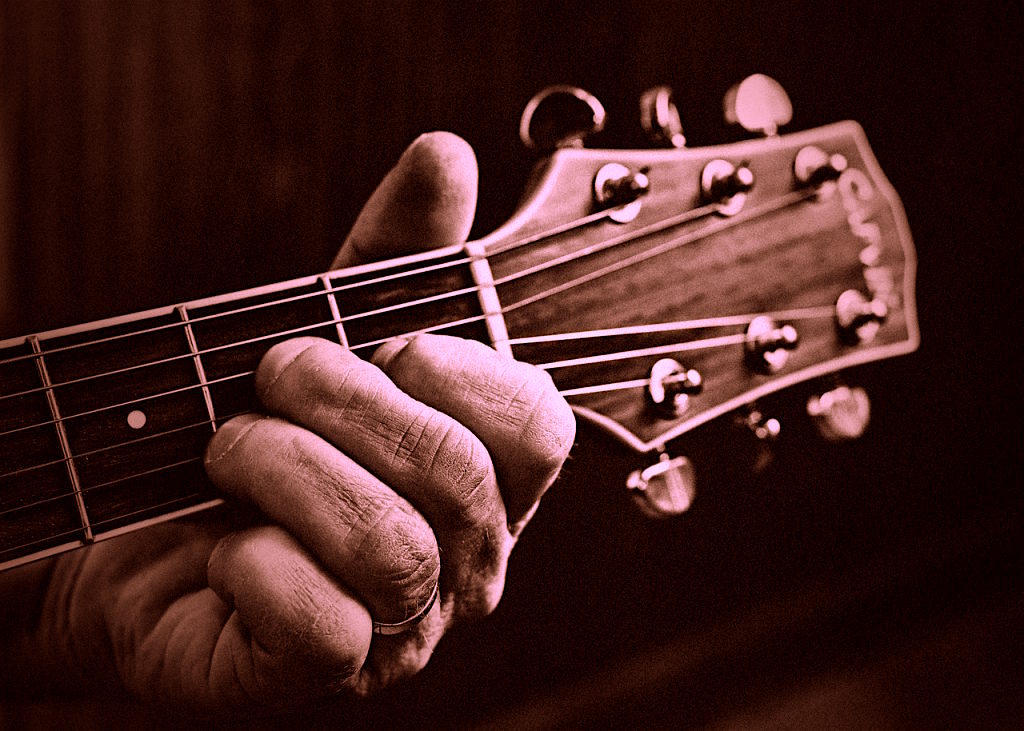
Note: This 12 Bar Blues lesson for beginners is divided in two parts, this is Part 2.
In case you missed it, here is 12 Bar Blues for Beginners – Part 1. You could also open these exercises in your Uberchord app (click for free download) and play along.
Example 4(a)
A typical I IV V blues progression in the key of A using open position dominant 7th chords.
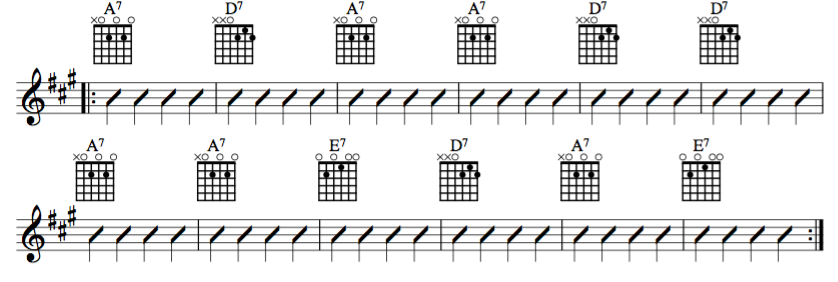
Example 4(b)
In this example, open position power chords are used to play through the progression in the key of A. The power chords are built on the bottom two notes of each of the open position chords from the previous example. Even though a power chord is typically expressed with a 5 following the root note (such as A5 indicating an A power chord), the 7 is used for the chord symbols here to reflect the overall harmony, as well as the fact that we are playing partial versions of dominant 7th chords here. Play with both a straight 8th and a shuffle feel and use your index finger to fret all of the power chords.
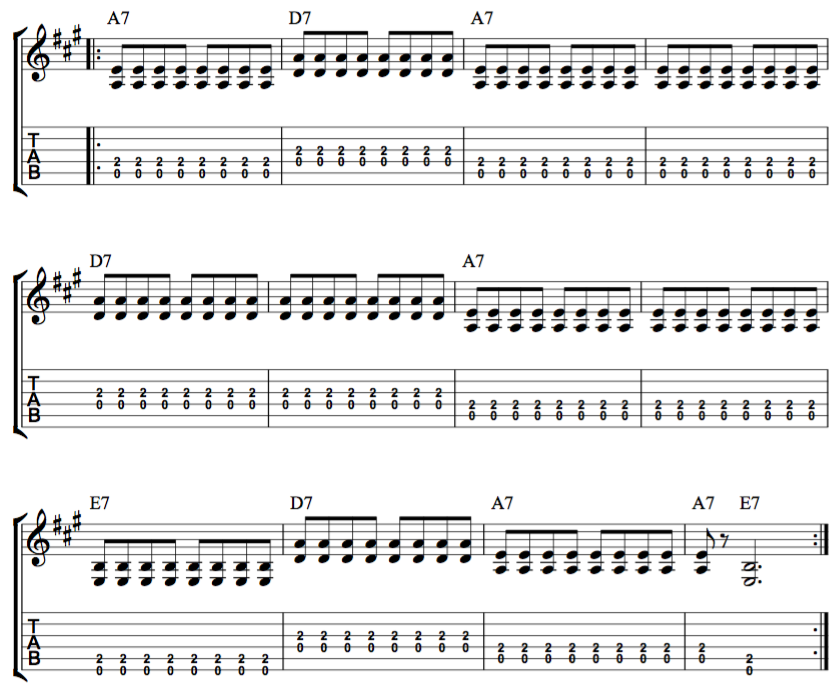
Example 4(c)
In this example we add an extra note to the power chord pattern we played in example 4b. Notice the 4th fret notes on beats 2 and 4 of each measure. This is the 6th degree of the scale being added to the basic power chord, and this is one of the most often used blues rhythm guitar patterns. Play it with a shuffle feel to bring out maximum bluesiness.

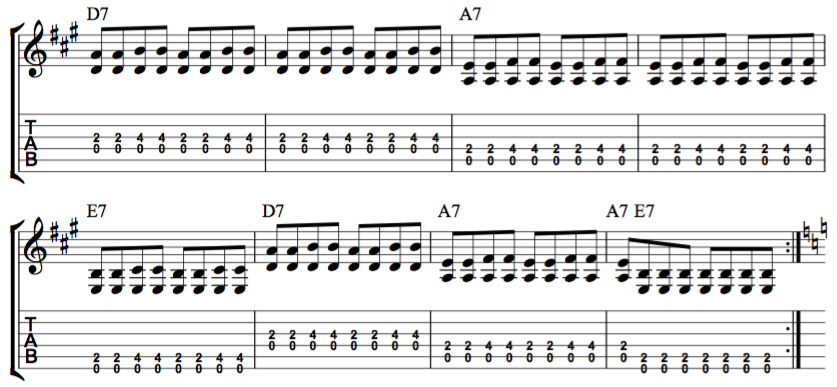
Example 4(d)
In this example, power chords are combined with a simple single note riff, creating a one measure pattern. Again, this pattern is taken through the 12 bar form. Finger the 3rd fret notes with your middle finger, and the 5th fret notes with your pinky. (If the 5th fret notes are too difficult to fret with your pinky, you can play them as open strings by going to the next string up in pitch from the 5th fret note you are playing).
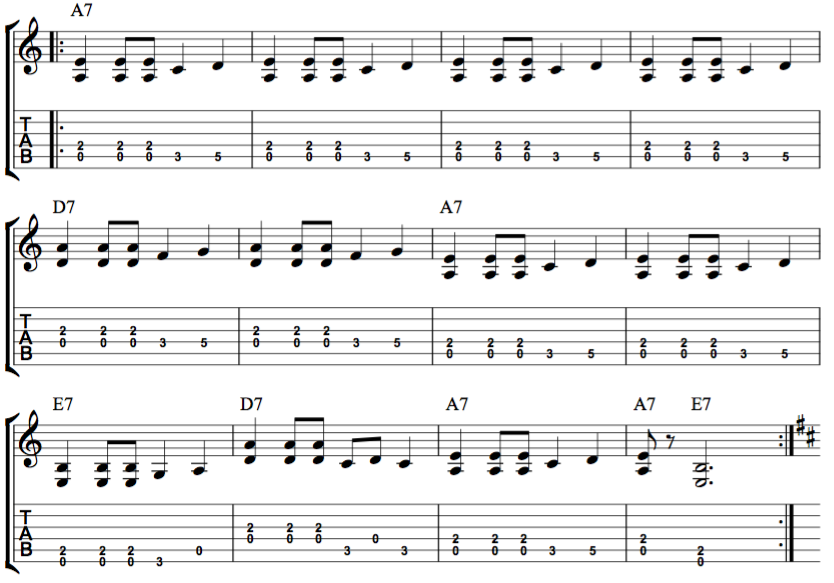
The Shuffle Feel
The shuffle feel is a very popular and useful rhythm used in almost all styles of music, but especially prevalent in blues and jazz. It is created when the 1st 8th note of a beat receives 2/3 of the beat and
the 2nd 8th note of the beat receives 1/3 of the beat, as opposed to “straight” 8th note rhythms where each 8th note receives half of the beat (see example 3) . This “staggered” feel produces a very distinctive rhythm. Often when playing a shuffle feel, the player will cut the 1st hit short, allowing for a silence between the 2 chord “hits” on each beat. When a shuffle feel is desired, the words swing feel or shuffle may indicated at the beginning of a page and the player automatically swings all the 8th notes.
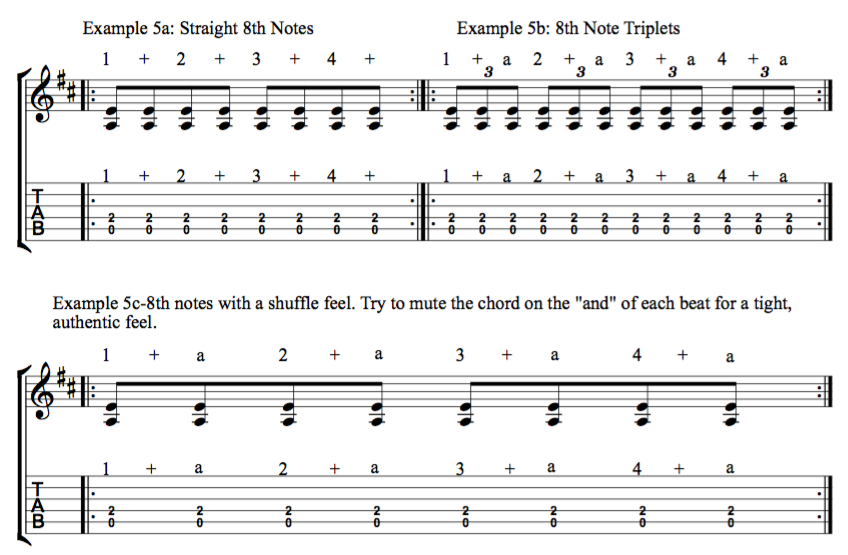
Hopefully you have enjoyed this overview of basic blues chording. There are many more exciting chording techniques associated with the blues, and most of them translate very well to other types of music. Have fun!



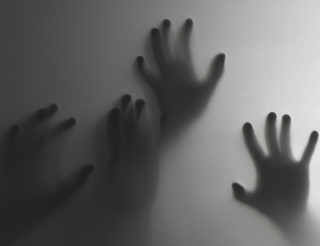
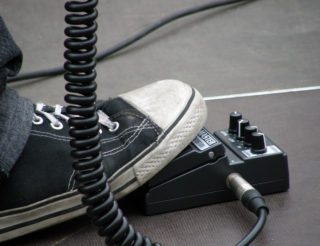
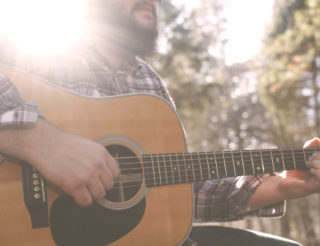


No comments yet - be the first.